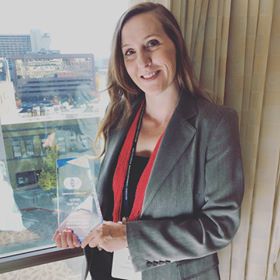The National Communication Association awarded Special Assistant Professor Elinor Light the Visual Communication Divisions Outstanding Article of the Year award for her paper, “Aesthetic ruptures: viewing graffiti as the emplaced vernacular.” The article was originally published in March 2018 in The award was presented at the 104th NCA Annual Convention in Salt Lake City, Utah.
Light’s article explores the emergence of the graffiti aesthetic in the United States. She argues that the contemporary force of graffiti as a rhetorical act began through The New York Times reporting of famous graffiti writers, “Kilroy was here” of WWII, and “Taki 183” of the 1970s.
“Much of how we understand graffiti today is a result of the framing by The New York Times in the 1970s, which understood it to be the rhetoric of a ‘Dangerous Other’, both in terms of race and class,” said Light.
Light examines the February 1972 New York Times article titled “Subway Graffiti Here
Called Epidemic,” and reports this article most clearly frames graffiti as a serious disease to the spatial health of the body of the city.
“This essay explains, the onslaught of ink and paint has spread to steel and tile wall, to route maps in cars, to station ceilings and to trackside walls reachable only through subway car windows or by standing between the cars of a stopped train,” said Light.
“The disease metaphor continues throughout the essay, employing terms such as ‘epidemic, onslaught, spread, wave, acute, attack, and innocuous’ to describe the epidemic-like qualities of the activity.”
Light began her academic career at CSU where she earned both her undergraduate and master’s degrees. After receiving her Ph.D. in communications at the University of Utah, she returned to CSU as a special assistant professor in 2015.
Light has been active in the Fort Collins art community for over 15 years and strives to engage with the art community through an academic lens.
“I am an artist at heart and much of what I study in the academic realm is related to my love of art,” said Light.
As a non-tenure track faculty member, Light is not required to research or publish scholarly articles; though it is clear that her scholarly writing and her teaching weave together as her essays explore visual and material culture, that she regularly teaches in these areas in the department.
“I was trained for research and I love to write; staying active in publishing informs my teaching so much,” said Light.
Dr. Light instructs the following courses at Colorado State University:
SPCM 201 Rhetoric in Western Thought
SPCM 335 Gender and Communication
SPCM 341 Evaluating Contemporary Rhetoric
SPCM 347 Visual Communication
SPCM 479 Capstone: Rhetoric in Cyber-Society